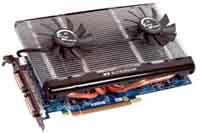As far as the PSU goes, you should aim for a reputable PSU with a high efficiency rating. High efficiency points to quality. Reputable does not mean popular by my definition, it means well proven.
I can link a site that provides decent reviews, but I'm not going to recommend one, as I have no idea what is available to you.
http://www.silentpcreview.com/section10.htmlLook here for some cooler info:
http://www.silentpcreview.com/article30-page1.htmlWith a Q number of 7.5, the Zalman CPS9500LED on that list cooled an E8400 @ 3.6ghz a full 10*C at both Idle and Load on a recent build I did.
The Thermalright Ultra-120's seem good but I think you need to buy a fan for them.
You won't need another PSU to overclock unless the present one is faulty or inadequate in some way. You may not have the best PSU, but it should provide the ability for some basic overclocking, without load conditions at least. You won't need a cooler either unless stress testing, but you won't know until you test the temps at load.
Maybe the PSU is not your current problem, (no pun intended).
No PSU or Cooler will help if you don't understand the basic O/C fundamentals.
With modern Intel based systems this is fairly easy if you simply twist the logic a little. (assuming your hardware is capable, and it probably is)
Forget all about everything you read about bus speeds, memory speeds etc, and take a fresh look.
Assume a CPU-FSB speed of 400mhz for starters, then you can improve upon that later if you wish. So you set 400mhz FSB in bios.
Set the FSB/memory ratio at 1:1, this means the 667mhz setting in your bios.
On the P5K, the 667mhz setting IS the 1:1 ratio lock. It is decieving, but think of it this way, if the FSB is set to 333mhz, (default for P35 chipsets) the ram will be running at 333mhz (DDR667), obviously the 1:1 ratio.
Lock the PCI and PCIe buses at their default speeds of 33 and 100mhz if your bios allows it.
Set an 8x CPU multiplier which equates to 3.2ghz for the overclock speed of the cpu. (400fsb x 8 = 3200mhz).
The ram will be running at 800mhz, and your ram is only rated for 667mhz, so, the ram may fail at 800mhz, and this will be the bug in the ointment.
If your ram is currently defaulting to cas 4 timings by SPD, then you may find that it will crash at 800mhz, yet if the timings are set to cas 5 figures, the ram may be fine at 800mhz. Obviously. if the ram is stable at cas 4 timings, then leave it there.
Often, bios will not configure ram correctly at overclocked speeds, and this can result in instability if the timings are left on automatic/SPD.
Sometimes, you can just boot the PC at default bios settings, then go into bios and lock the ram timings by setting the timings to manual configuration, and don't make any other changes to them. These locked timings may work well with the overclock, and they provide a base from which to make timing alterations if no other information is available.
If your PC5300 is unstable at 800mhz, you may stabilise it with some extra ram voltage, but do this in small steps, ram can be easily burnt. Some ram just doesn't seem to respond to voltage increases at all.
While setting up the clocks, turn off all auto clocking options in bios, so your software reads the correct speeds and you don't get confused, you can re-enable them later with luck.
You may still find instability at the above settings, even if your ram and timings are correct...... indeed, you may need a slight vcore increase or chipset voltage increase, but take it all one step at a time.
If you cannot get the ram stable at your overclock, you need better ram, and no PSU or cpu cooler is going to help you there.




 Mainboard: Asus P5K-Premium, CPU=Intel E6850 @ x8x450fsb 3.6ghz, RAM: 4gb PC8500 Team Dark, Video: NV8800GT, HDD: 2x1Tb Samsung F3 RAID-0 + 1Tb F3, PSU: Antec 550 Basiq, OS: Win7x64, Display: 24&
Mainboard: Asus P5K-Premium, CPU=Intel E6850 @ x8x450fsb 3.6ghz, RAM: 4gb PC8500 Team Dark, Video: NV8800GT, HDD: 2x1Tb Samsung F3 RAID-0 + 1Tb F3, PSU: Antec 550 Basiq, OS: Win7x64, Display: 24&




 ...!
...! ....
....  ....!
....!